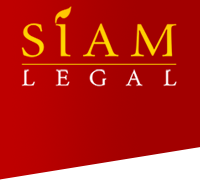Adjustment of Status Timeline
The adjustment of status for permanent residency in the US can be claimed depending to the type of visa you had applied for. You cannot become a permanent resident using any of the non-immigrant visa categories though you can get a permanent resident using an immigrant visa. Generally, you can become a permanent resident based on a family member or employer’s sponsorship or your status as a refugee.
For K1 and K2 Visa Holders
If you have a K1 or fiancee visa, you are eligible for adjustment of status after your marriage. While K2 visas for an unmarried child of a fiancée are also eligible for an adjustment of status. You will become a conditional resident for the first 2 years of the marriage.
See the what is a K-1 visa page.
For K3 and K4 Visa Holders
If you have a K3 visa, you are eligible to file Form l-485 and adjust your status at any time after you enter the US. But you will only have conditional residence if you have not been married for at least 2 years. While K4 visa is also eligible for adjustment of status after you enter the US either concurrently or after a US citizen files a petition for you. Same as the K3 visa holder, you will only have conditional residence if the marriage is less than 2 years old.
See the what is a K-3 visa page.
For CR-1 Visa Holder
If you are a CR1 visa holder, you already have conditional residence. Your green card will expire 2 years from the date you entered the US. You and your spouse must apply together to remove the conditions on your permanent residence based on marriage within 90 days before your conditional green card expires.
See the U.S. CR-1 Visa page.
For IR1 Visa Holders
An IR1 (spouse), IR2 (unmarried child under 21 years old), IR3 (orphan adopted abroad), IR4 (orphan to be adopted in the US), and IR5 (parent of a US citizen who is at least 21) visa holders are all automatically permanent residents of the US.
See the U.S. IR-1 Visa page.
If you have a family preference like the following:
- F1 (unmarried child 21 years old, and their minor children)
- F2 (spouses and children of legal permanent residents)
- F3 (married children and their minor children)
- F4 (siblings of US citizens over 21 years old, along with the sibling’s minor children)
If you are a visa holder of one of those listed above, you can file for an adjustment of status when their priority date becomes current if they are in the US. If you are outside the US, you will become a permanent resident when you enter the US in one of these visas.
In some cases, you may also be eligible for permanent residency through job offer, investment, or your extraordinary ability. Diversity visa lottery winners are also eligible for legal permanent residence once they are able to obtain a visa. There are also a few special cases based on humanitarian and public policy goals of the US. After all, if you entered the US as a refugee or a qualified family member of an asylee, you are eligible for adjustment of status 1 year after you were granted asylum status. Refugees are required to apply for permanent residence 1 year after entry into the US. For asylees applying for permanent residency is optional.
Category: Adjustment of Status
About the Author (Author Profile)
Siam Legal is a full service law firm but it has an extensive range of immigration, corporate, and real estate experience accessible to clients both domestically and internationally. It has offices strategically located throughout the major cities in Thailand including Chiang Mai, Pattaya, Hua Hin, Samui and Phuket along with international representative offices in Australia, London and Las Vegas.











